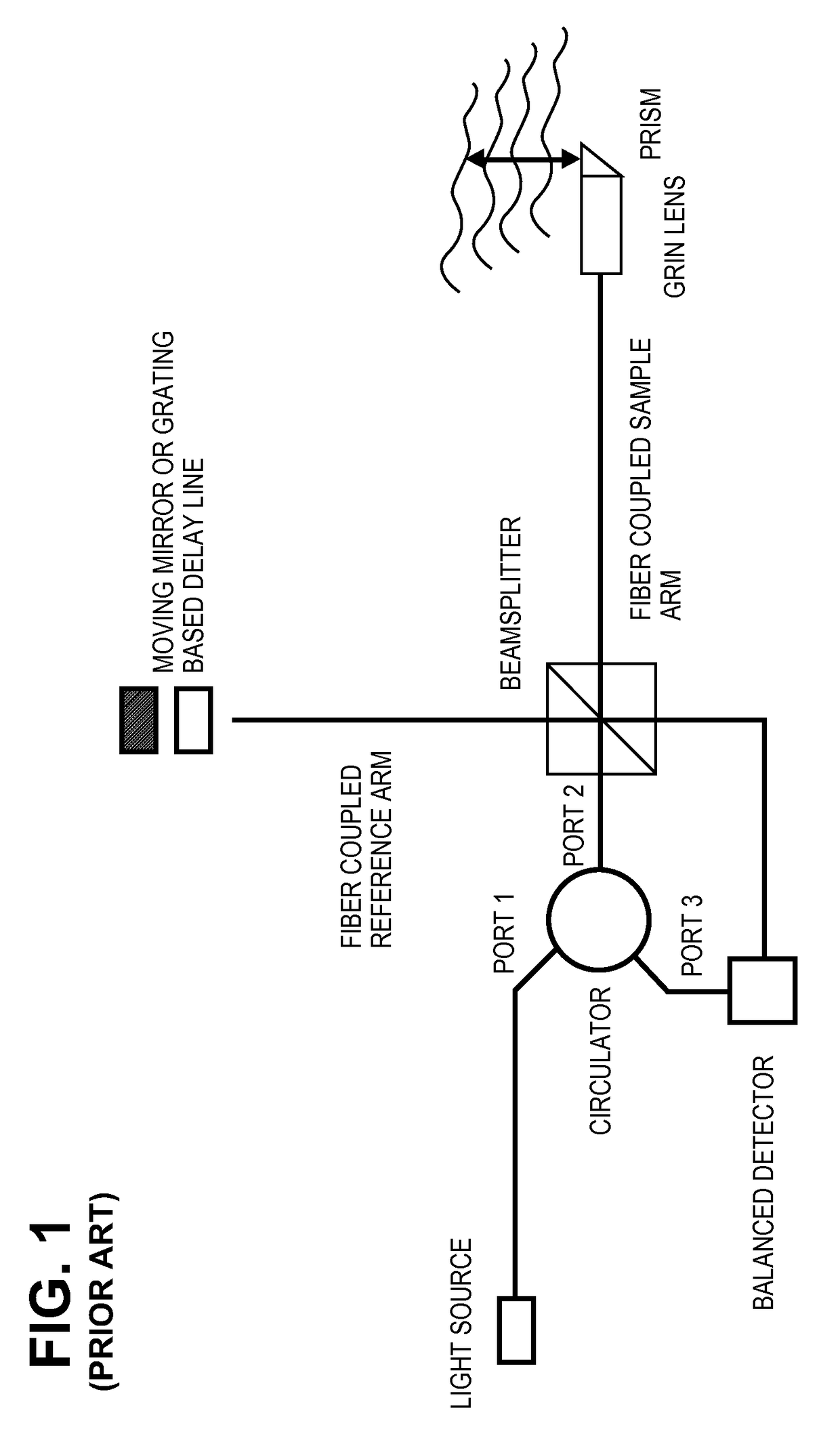Optical coherence tomography for biological imaging
a biological imaging and optical coherence tomography technology, applied in the field of optical coherence tomography for biological imaging, can solve the problems of refractive index, mismatching of refractive index, refractive index, etc., and achieve the effect of improving long- and short-term outcomes and reducing procedure tim
- Summary
- Abstract
- Description
- Claims
- Application Information
AI Technical Summary
Benefits of technology
Problems solved by technology
Method used
Image
Examples
example
[0111]In one example, an image-guided interventional catheter (e.g., an OCT catheter as described above) may be used to address unmet needs in peripheral and coronary artery disease (atherosclerosis). The system may include a console having a modest footprint and in a cath lab without need for extensive integration into cath lab systems. In some variations, the systems described herein may be integrated with other catheter (e.g., guidance, control, imaging) systems. The system may be configured to allow a procedure to start / proceed / finish under fluoro guidance in the event of a system failure. The system is also configured to be compatible with sterile procedures.
[0112]As mentioned above, the OCT systems described herein may allow real-time information on intravascular lesion morphology and device orientation in the vessel. This and other features may also allow improved navigation precision around complex anatomy (e.g., bifurcations, ostials, tortuosity, cutting on a curve, etc.), ...
PUM
 Login to View More
Login to View More Abstract
Description
Claims
Application Information
 Login to View More
Login to View More - R&D
- Intellectual Property
- Life Sciences
- Materials
- Tech Scout
- Unparalleled Data Quality
- Higher Quality Content
- 60% Fewer Hallucinations
Browse by: Latest US Patents, China's latest patents, Technical Efficacy Thesaurus, Application Domain, Technology Topic, Popular Technical Reports.
© 2025 PatSnap. All rights reserved.Legal|Privacy policy|Modern Slavery Act Transparency Statement|Sitemap|About US| Contact US: help@patsnap.com



